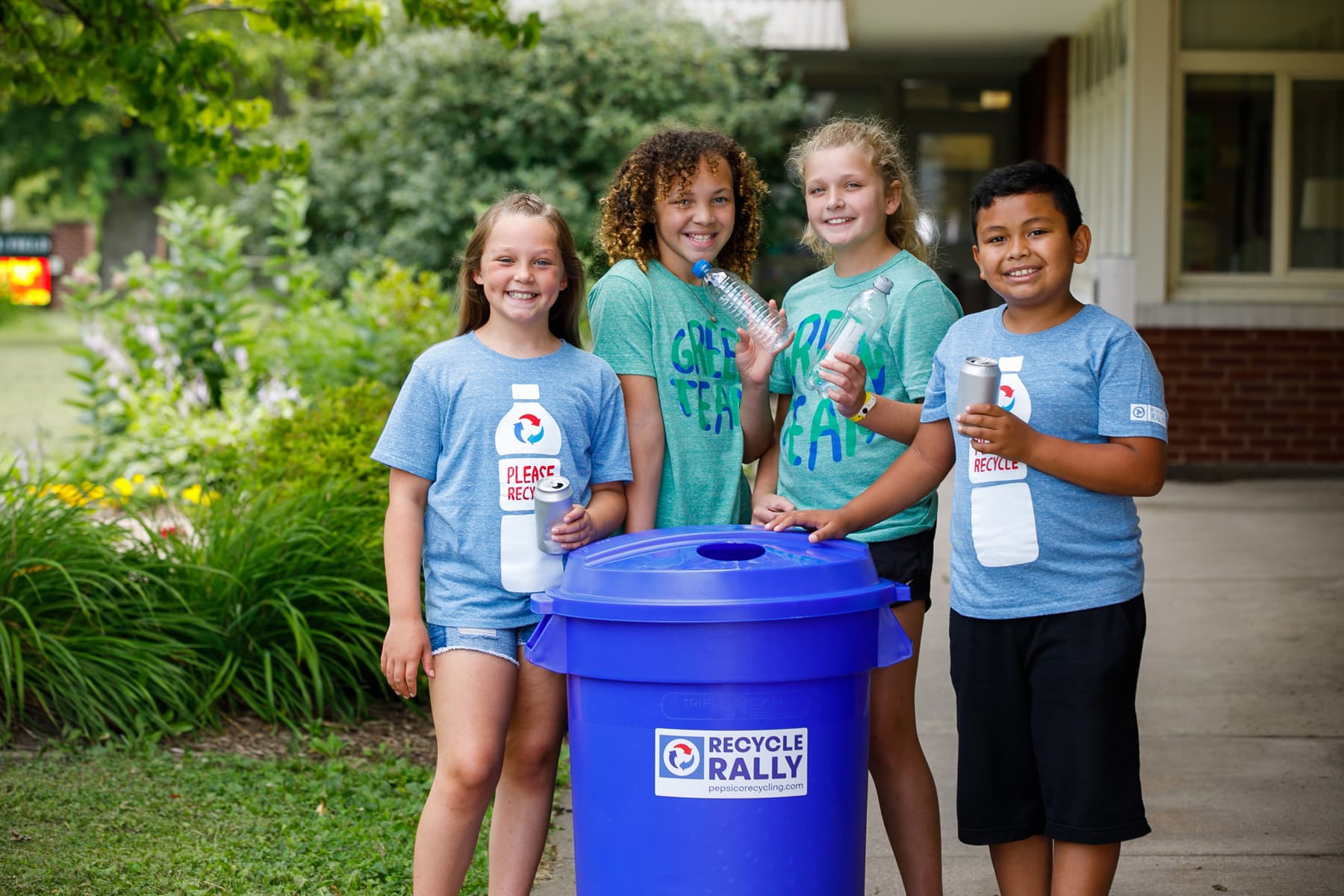Create Your Own History of Recycling Presentation
Give students the chance to learn about the history of recycling and focus in on what they are most curious about. First, students will read two articles, then they’ll conduct their own research, and finally, they’ll create a cool history of recycling slideshow that showcases their learning. Here’s how to make recycling learning happen:
1. Download the slideshow: The History of Recycling Student Template
The template can be used as a PowerPoint or converted to Google Slides. Both versions are customizable by each student. This gives students the opportunity to have some side rails for setting up a slideshow and learning best practices.

2. Identify topics students can choose from
Topic ideas include how recycling began, how recycling has evolved, the start of recycling collection, or who was involved in the history of recycling. Find more ideas by reading about the history of recycling and how America has transformed trash.
3. Model and practice brainstorming strategies
Allow students to look into their topic to learn more and find details they may later include in their presentation. Ask students to consider research questions such as:
- When did this recycling process come to be? Who started it? Why is it important?
- How has this contributed to the success of recycling throughout history?
- Where does my topic fall in the history of recycling? What role does it play?
- How did this topic lead to other recycling innovations?
4. Encourage further topic research
After students read more about the history of recycling, share how they might conduct further research to identify three main ideas with three supporting details, as the template outlines.
5. Support students in building their history of recycling slideshows
Now it’s time to put the template to work. The student will transfer the information they found to the presentation template. These slides will communicate the main ideas of their report. You may want to explain that in a slideshow, some but not all information appears on each slide. Students should save some information for narrating the slideshow, filling in the complete picture of their knowledge.
6. Assign time slots for students to present what they’ve learned
Students will present their completed reports to the class and display their new recycling knowledge.
7. Foster a discussion about how each topic is connected
After presentations have concluded, make connections on how each of these recycling topics has led to the recycling system we know today. Discuss how recycling could be improved and tie in thoughts given by students throughout the presentations.
Helpful Tips:
- Use this free recycling slide show to kick off your lesson.
- Share these videos with your students: recycling through the eyes of a student or why every bottle matters.
- Consider a 30-Day Zero Waste Challenge.
History of Recycling Slideshow
Learn More

Recycle Rally
Recycle Rally is a free K-12 program that provides rewards and tools to help enhance recycling at your school!
Explore now
Additional Resources
Our comprehensive library of resources was designed to inspire the next generation of green leaders.
Explore now

